Italy 2012 (continued)
I arose early and met other women for breakfast–one of the best breakfasts of the trip (see Menu post). I was still full from last night, and not eager to start out the trip chowing down, so I restrained myself, indulging only in some hot chocolate–something I like to do while traveling. Why were we up and at breakfast by 7 a.m., when it was still dark (and raining) outside?
Because every year these women, one from Egypt (named Waggida), one from Thailand (assistant to THE Princess) and one from Turkey, had walked past this market on their way to their meetings and had always wanted to see it. I was not hopeful; I’d been to small town markets before, but we were off by 7:30 a.m.
Did I mention it was raining? Egypt and Thailand zipped on ahead of us–those two women were professionals and didn’t mess around (nor buy anything, Egypt told me later). Turkey looked in every stall. Crystal and I browsed, looking at the more interesting stalls, but passed on the ones selling stockings, sweaters or bras.
We hurried back to our hotel, for we were going on the spouse’s tour to a very important abbey: Nonantola, pronounced No-NAHN-toh-la. I also found out that the town where all our balsamic vinegar supposedly hails from — Modena — is prounounced MOH-den-nah. Not Mo-DAIN-uh, like we all say.
Two Nonantolans. Hanging out.
The front door of the Abbey. This was a very important sight for us to see, but we couldn’t go into the church (because of all the earthquake damage from last year). In other words, we should see this, but we won’t. Instead we went next door to the museum.
Where we learned about how they made books (stretched calf skin, above). Apparently ages and ages ago those who inhabited this Abbey (monks) were big on making books, and they had developed many different fonts, which picture turned out blurry because I was sneaking photos with my cell phone before one of us tourists asked the inevitable question: “Are we allowed to take photographs?” “No.” (Don’t ask, don’t tell.)
Upstairs, this is the other of my contraband photos: This is one section of a pleated nightshirt that one of the important popes wore to bed. One other woman and I spent a lot of time trying to decide if it was stitched into place (like smocking), or if it were pressed into place. I voted for the pressed into place. We spent some time discussing this and feeling sorry for the poor serving girl who spent her whole day pressing a nightgown, and we missed out on the spiel on the all important skull-within-a-skull reliquary box and the upright-bone-with-silver-hand reliquary box, among other treasures. All the titles and descriptions were in Italian, but did find out from our tour guide that long ago the people believed that if they touched the reliquary, then the part that touched it–say, their finger–became holy, too.
One last contraband picture showing an illustrated Bible. But not one that had been done here. And not one that was as old as Nonatola, which near as I could make out had its genesis about the 10th century.
Apparently, we could go down into the crypt because it was all redone in the 1950s, and hadn’t been affected by the earthquake. But it was done in the style of the early church, with some of the capitals on the columns original to that church.
I am a terrible tourist sometimes, focusing in on the visual, and listening to the history of everything with one ear. I’m always looking at the shapes, the colors, the designs. . .
. . . and fascinated by old windows that have multiple shades of glass in them.
We went outside, in the misty rain, to see the Abbey.
The other side of that window.
I think that these churches must have been heroic to the inhabitants of this ancient town, with their soaring walls and brick designs. By making this the largest and most imposing building in the town, the church would have asserted itself as the most important, and perhaps not only a protection for the town (I heard that part) but also a giver of laws, and an enforcer of the same.
Nonantola Abbey detail.
It’s raining more, now, so we dash to the mini-bus.
We drove for a while through the countryside and headed to an acetaia. This is a farm that is in the business of making balsamic vinegar, so I suppose the English translation might be a vinegeria, or something.
Here we all are, standing out in the misty rain. It wasn’t that bad, but I wish we could have seen this farm on a sunny day, as the grounds were beautiful.
Here’s the basic vinegar rules: Take a slew of white grapes and crush in the crusher thing. Take the juices and move them into this cooker thing, which heats the juices to 90 degrees centigrade for about a week. The resulting brew is called a must. And you should have heard the farm guide tour say that word. Here’s a sample:
After this evaporates and sits around for a while (we liked the drunken wasps dive bombing this stuff), they transfer it to barrels.
The barrel has a hole in the top, which they cover with a cloth and the barrel cut-out, which has another hole in it. This is to allow the vinegar bacteria to find the “must” and join in the party. Or something. Our bus tour guide kept translating the farm tour guide’s English into American English.
They tag each of the barrels.
They are organized into groups of six, in graduated sizes.
Most of them are in the attic, where it gets hot in the summer and cold in the winter. This apparently makes for good balsamic vinegar.
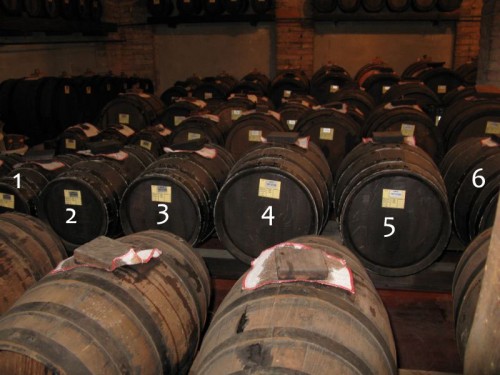 Here’s how it works. When it’s vinegar harvest time, they draw from barrel #1, the smallest, emptying it. They refill barrel #1 with vinegar from barrel #2. They refill #2, with vinegar from #3 and so on. By the time they finish, barrel #6 is empty and they fill that with new must from the vat downstairs. You never mix barrels as they are like their own little family. Some barrels are made from cherry, or oak, or other woods. This process takes about 12 years, and at that point, they run a little sample down to the local agricultural board (blind taste test) to see if it’s ready. It might be. . . or not, in which case that batch continues the aging process. So they say that good vinegar is between 12 and 25 years old. We had some taste tests downstairs (at the gift shop, where else?) and it was very interesting how as the vinegar aged it took on almost a sweet quality. I didn’t buy any (ran out of time), but did end up buying some of a less-aged type in the store Eataly in Bologna. I am waiting to open it, because once it’s gone. . . I’ll have to pay an arm and a leg to get any more.
Here’s how it works. When it’s vinegar harvest time, they draw from barrel #1, the smallest, emptying it. They refill barrel #1 with vinegar from barrel #2. They refill #2, with vinegar from #3 and so on. By the time they finish, barrel #6 is empty and they fill that with new must from the vat downstairs. You never mix barrels as they are like their own little family. Some barrels are made from cherry, or oak, or other woods. This process takes about 12 years, and at that point, they run a little sample down to the local agricultural board (blind taste test) to see if it’s ready. It might be. . . or not, in which case that batch continues the aging process. So they say that good vinegar is between 12 and 25 years old. We had some taste tests downstairs (at the gift shop, where else?) and it was very interesting how as the vinegar aged it took on almost a sweet quality. I didn’t buy any (ran out of time), but did end up buying some of a less-aged type in the store Eataly in Bologna. I am waiting to open it, because once it’s gone. . . I’ll have to pay an arm and a leg to get any more.
They got us back to Hotel Touring in time for lunch, which was a pasta dish, baked endive, amazing salad and for dessert: some of last night’s plus tiny fruit tarts. Dave is chatting with Waggida (Egypt) about science. She was headed from here to the airport to head to Philadelphia. I kept thinking about her heading into the midst of Hurricane Sandy and the huge storm on the East Coast, and have wondered how she did.
After a break, Crystal and I head to the local Conad, a grocery store, because I’m on the trail for Italian candy to bring back to my class.
Found it–the empty spots, but there was enough for what I needed.
I always like looking in grocery stores and so did Crystal so we were a pair.
Bull dog food.
Relax for the skin, first thing in the morning.
Mannequins, ready for dressing.
I wanted to head in here, but really–when you have limited luggage space, just how will you get some of this home?
Our Ramazzini Days banner. You can see a lot of metal fence barriers here, evidence that they are trying to recover from the earthquake from last year.
Door handles.
The door handles are men’s mouths, like ancient men. I have a close-up of these in Bologna (this set is pretty beat up), which I’ll show you. The colors are all so subdued because of the rain.
Newstand.
I had decided in the states that my souvenir from Italy would be a leather purse. These, with Halloween decorations, were interesting, but not for me. Since it was a few days before Halloween, I noticed that Carpi was celebrating the event, too.
By a bakery.
I think the city was sponsoring a Halloween-themed downtown event, and she was all made up–Italian version of a witch. I found what I saw reminded me of my childhood Halloween celebrations: rather tame and innocent and certainly geared toward the children. I sort of miss that type of celebration in the States. We have become much more about the gore and blood and vampires and while I’m not clueless enough to think that Italy doesn’t know about vampires, it doesn’t seem to be celebrated in this little town.
The children ran from shop to shop, asking for–and receiving–treats.
Mother has gotten into the action, too.
Now the rain had let up, and we even saw some sun rays poking through the afternoon cloud cover.
We duck into the Palazzo del Pio, which either didn’t have too much damage, or they’ve repaired it. I do know that the old building attached to the side of this “Honor Courtyard” was where the Collegium Ramazzini used to meet and it was now declared unsafe.
Classically designed rain gutter in the couryard.
I show you these two photographs side by side, as they demonstrate how all the colors just come alive (upper) when the sun is peeking through the clouds. Yes, some of it can be explained by lens and light exposure, but it was quite dramatic the difference the sun’s light made. We found the same phenomena in Bologna.
The open door led to a smaller courtyard with even older-looking walls and buttresses.
I was teasing Crystal about her “smile” for photographs–a sort of a daguerreotype posing. I like this smile much better.
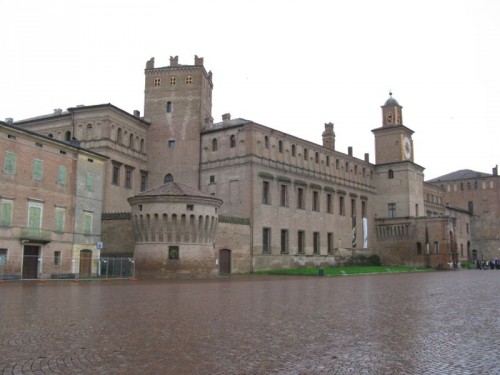 I assume that the tall tower on the left (this is a view from the Piazza del Martiri) is the frontside of what I was seeing inside. I hope someday to tour it all–I hear there are frescoes in there somewhere.
I assume that the tall tower on the left (this is a view from the Piazza del Martiri) is the frontside of what I was seeing inside. I hope someday to tour it all–I hear there are frescoes in there somewhere.
The Municipal Theater. With barriers. The slice of building on the left side of the picture is where Ramazzinians used to meet. Bits and parts of the steeple were in pieces on the ground (behind barriers).
One of the charming things about Italy is how they blend the old with the new. New plaster everywhere, with the old parts exposed.
This grand plaza–Piazza del Martiri (no translation)–is what we saw when we came out of the Palazzo del Pio. And it was coming to life with teenagers and more costumed goblins and witches and in the orange tent, the radio station was playing music. Crystal and I meandered back to our hotel to get ready for dinner.
Dave was there with his Ramazzini medallion. I made him put it on (below):
Congratulations, Dr. Dave!!
Dave went off to a lecture, and I dawdled around, taking my time to get ready for dinner and answering emails (good internet here!). I went down at 7:45 and walked over to the bus; the meeting was 30 minutes late getting out. Turns out the mayor is a true politician and likes to hear himself give speeches. Our dinner was in a banquet hall at the top of a local restaurant. When I get the Menu post going, I’ll link over.
The next morning, Dave went off to meetings again and Crystal wanted to walk some more.
Requisite graffiti. It is interesting how different the style of street art can be from country to county.
Because of the damage to their usual meeting place, the Ramazzites had moved their meeting to the San Rocco buildings–a former monastery converted to music school. This interesting leaning structure was in the garden.
This hallway looks very much like Palazzo del Pio’s hallway, but there are some differences. We head upstairs to find the group was on their break.
I take a picture of Dave next to his poster. We babied carried that thing through three airports and across an ocean and a continent, so it was great to see it intact. (We later left it by accident in one of our hotels. Ooops.)
Door in San Rocco.
Our classroom doors look nothing like this.
We walked back to the hotel, where they feted us with lunch. We had packed that morning, so were ready to leave directly from lunch to be taken to Bologna, which will be in the next post.
There are lots of journeys on this blog, so for this trip, look for Italy 2012 at the top of the post.
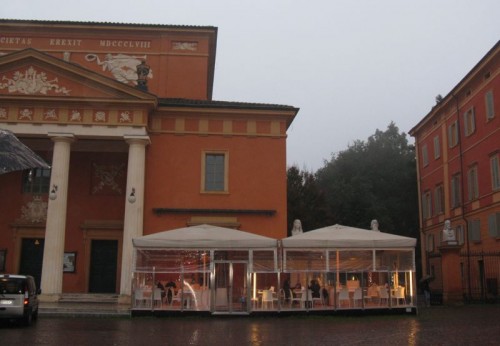
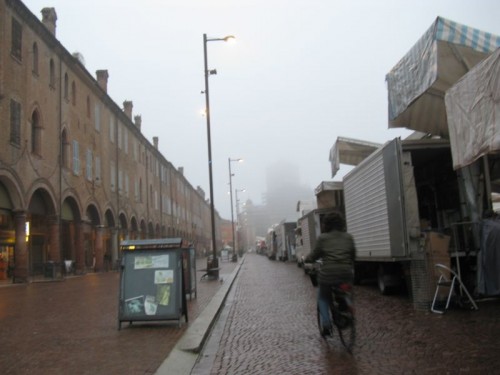
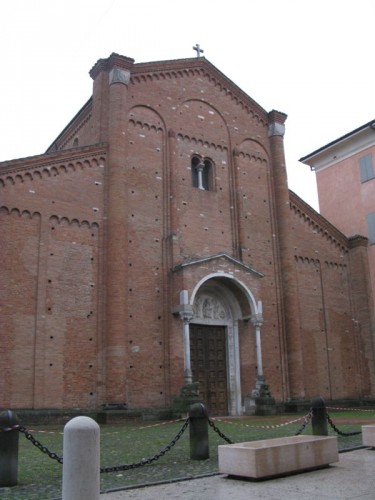
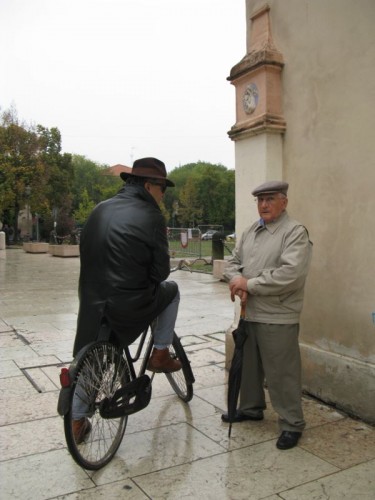
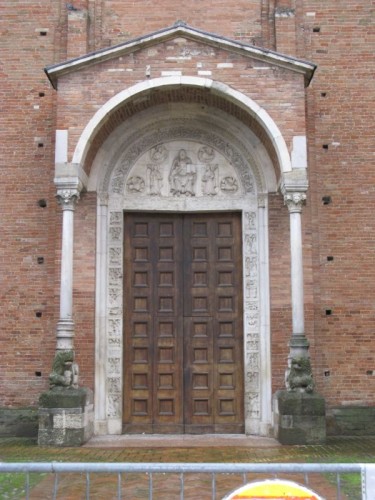
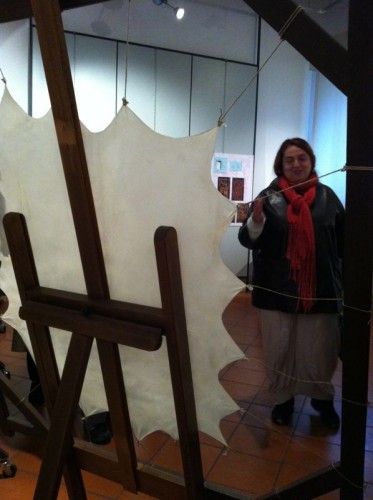
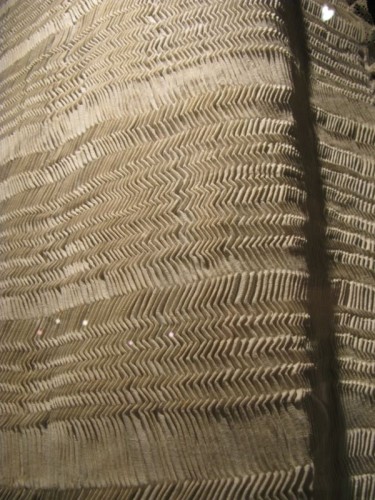
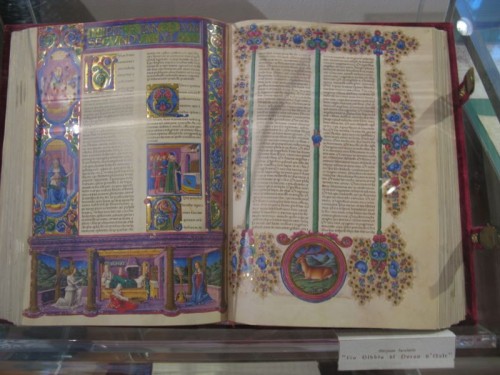
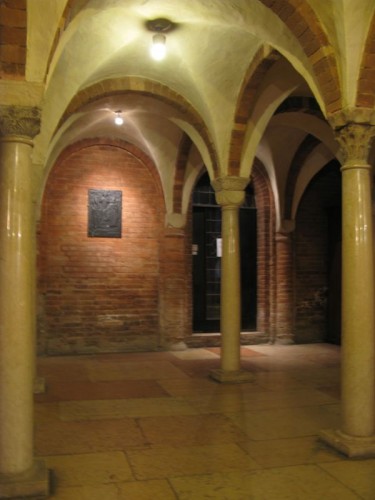
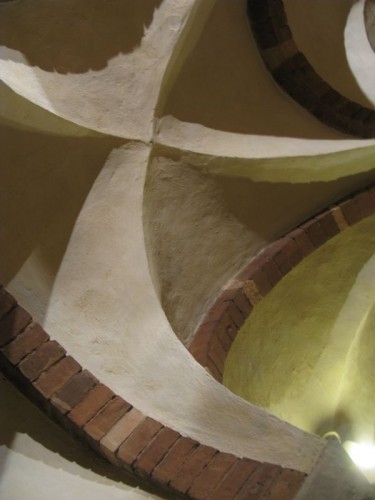
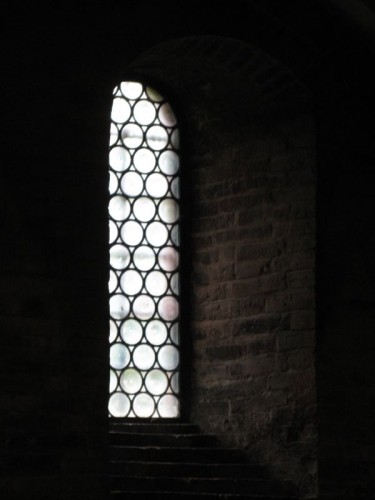
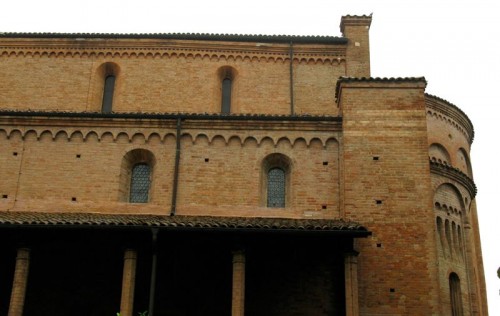
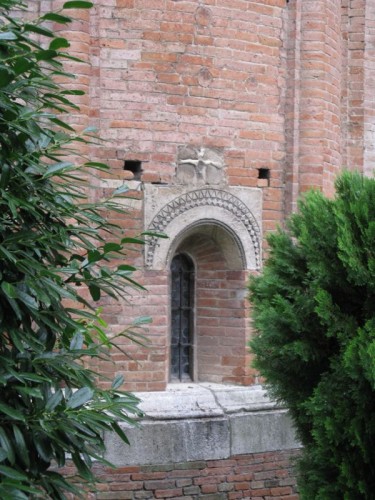
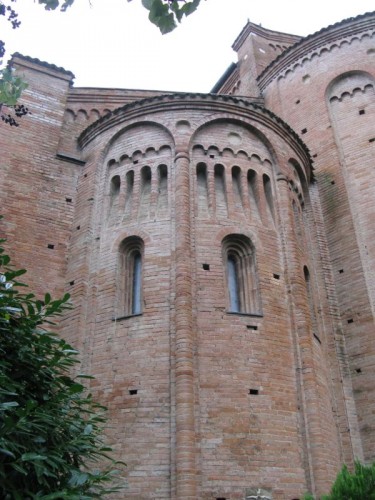
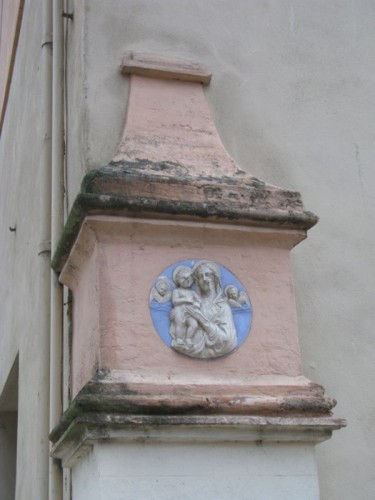
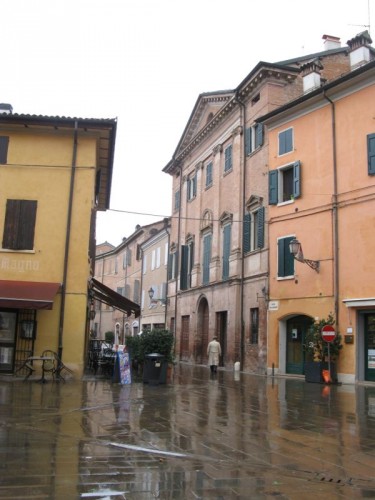
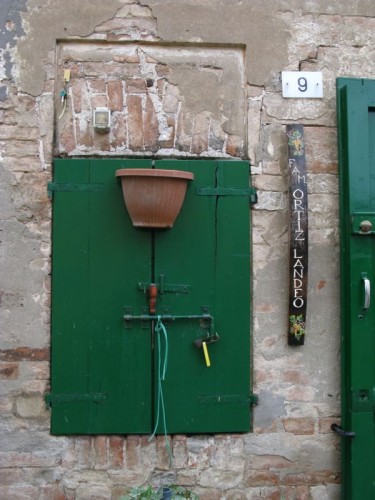
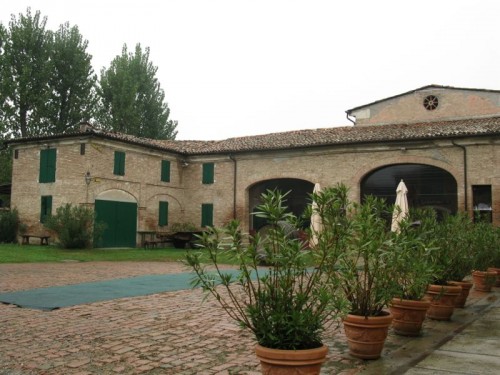
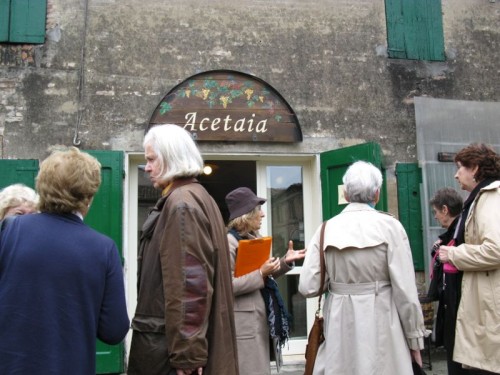
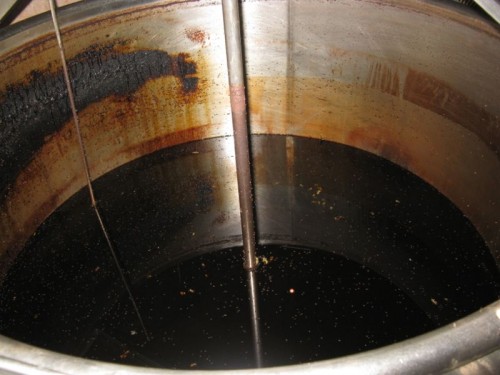
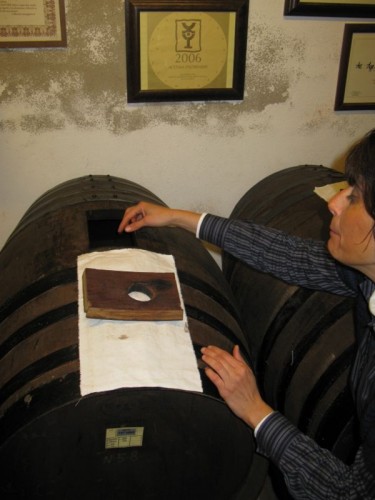
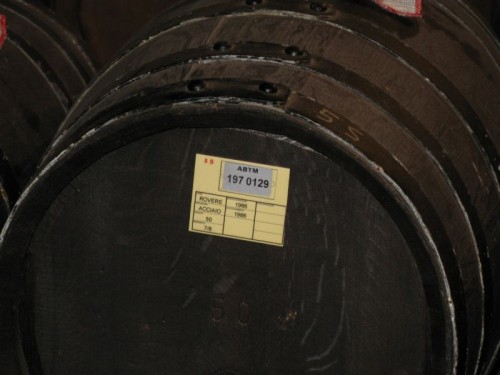
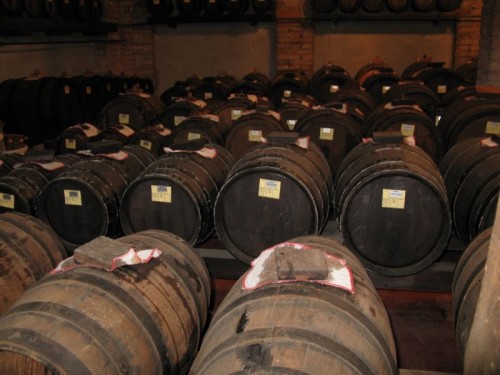
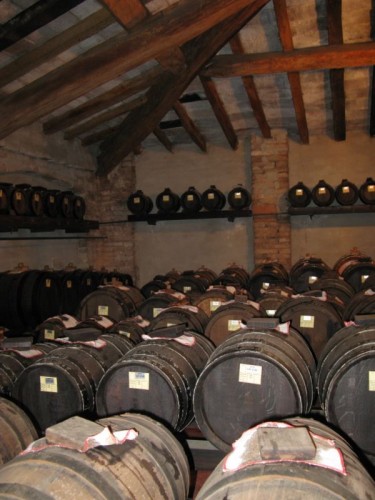
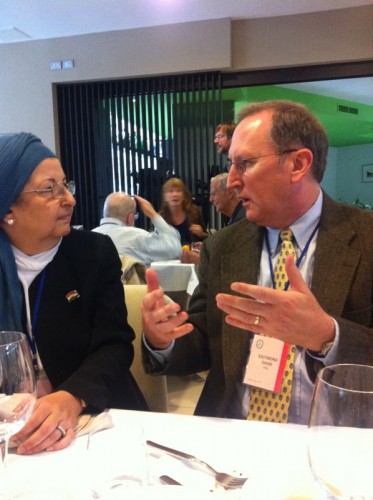
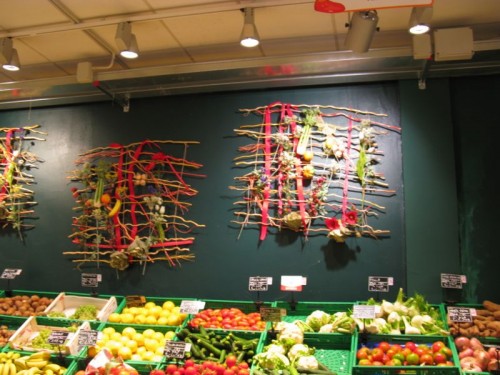
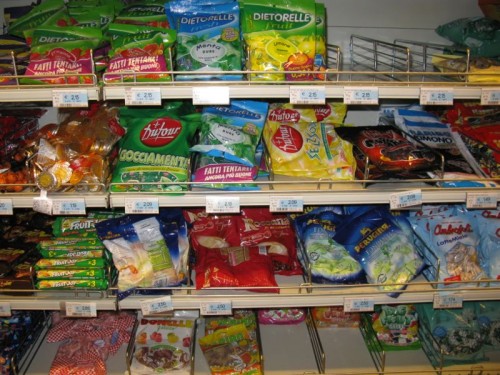

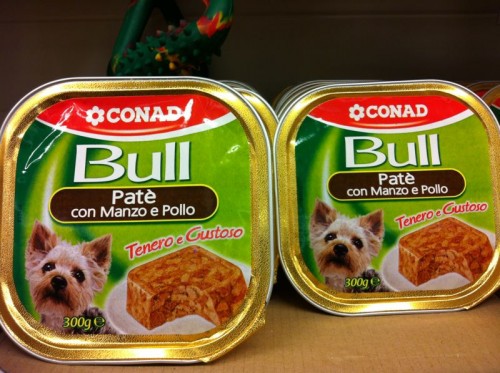

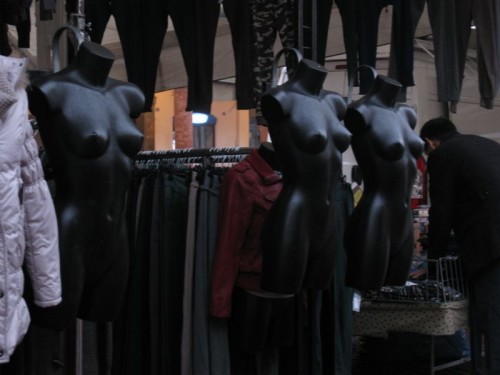
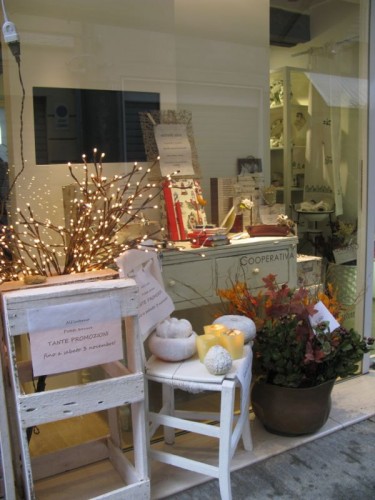
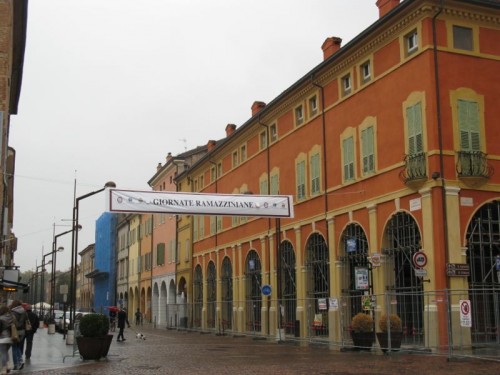
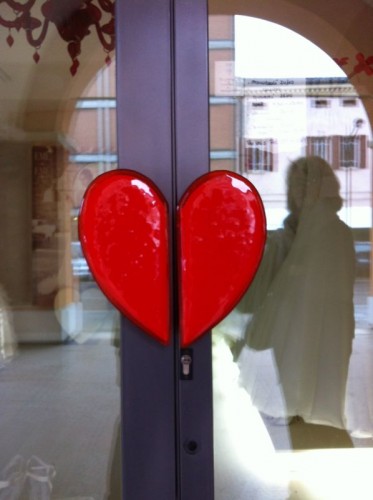
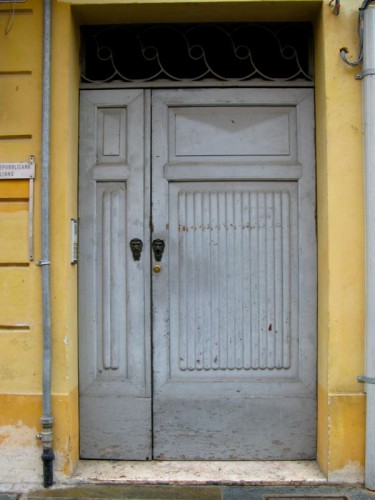
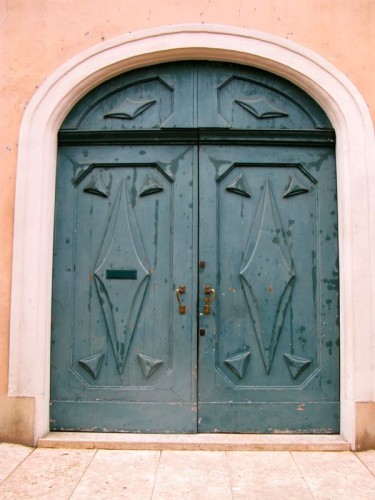
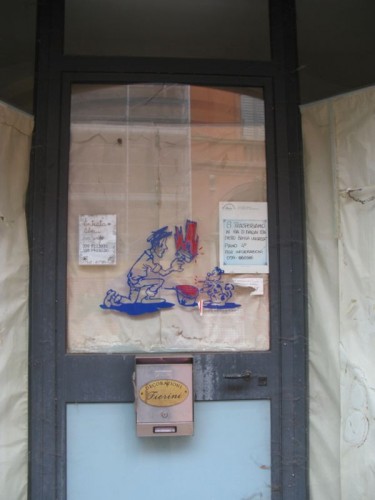
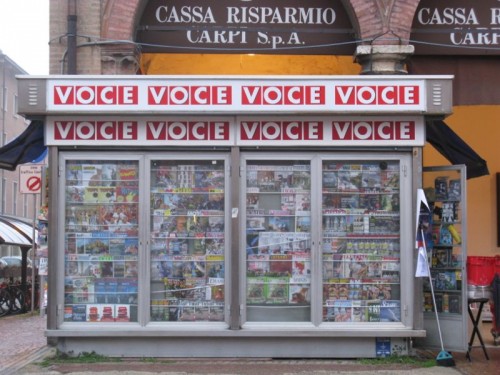
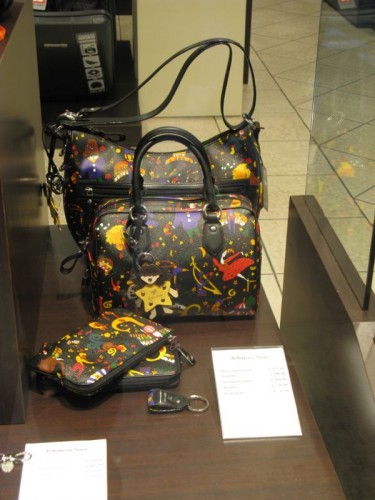
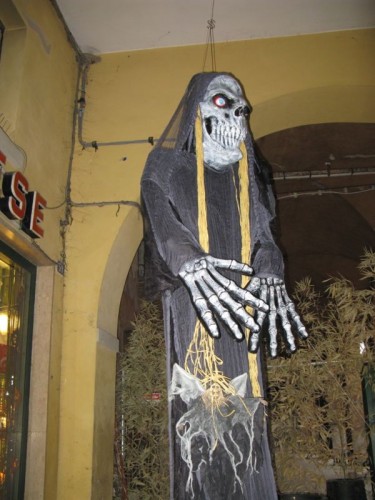
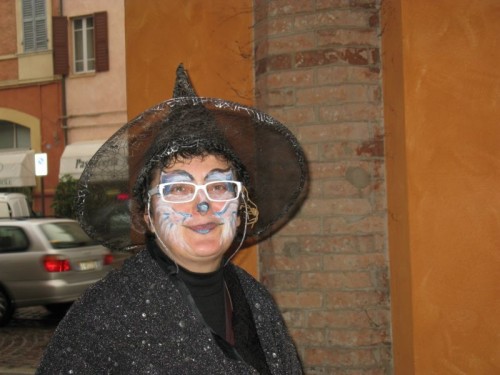
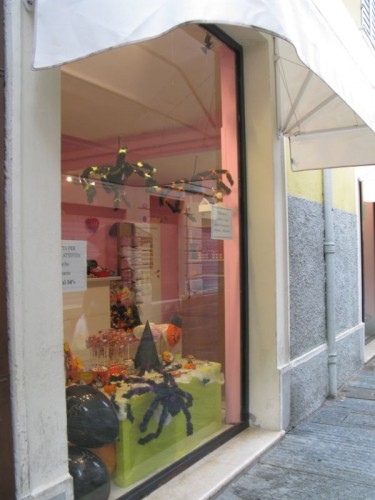
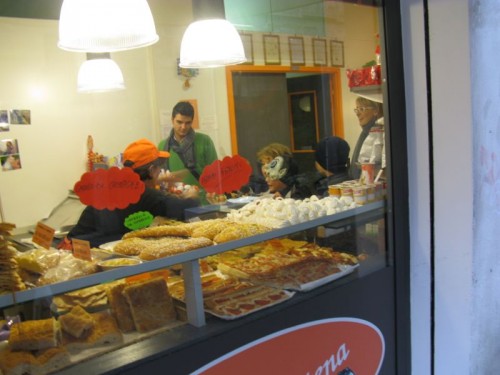
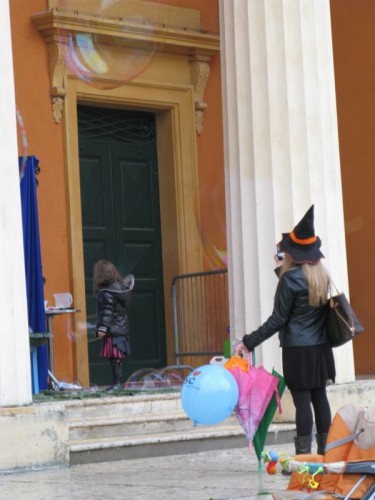
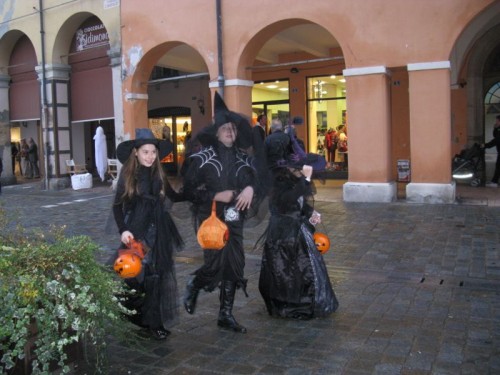
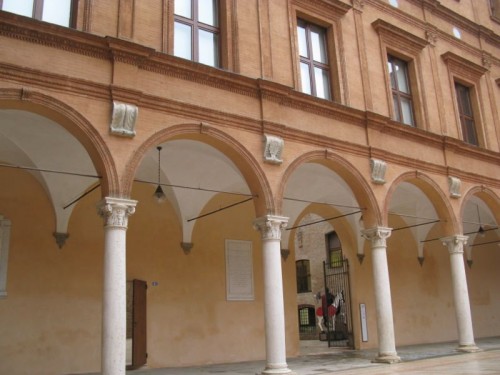
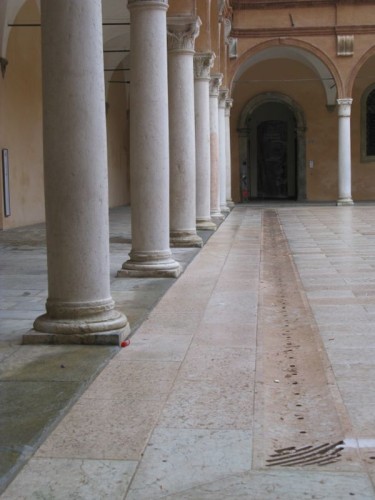
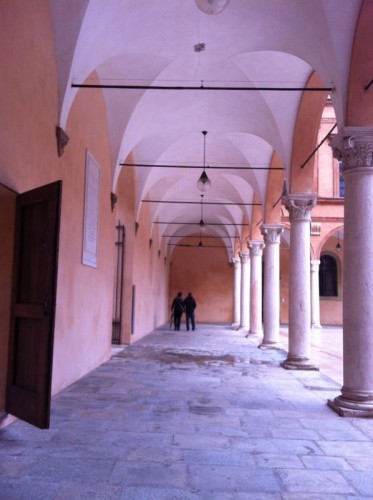
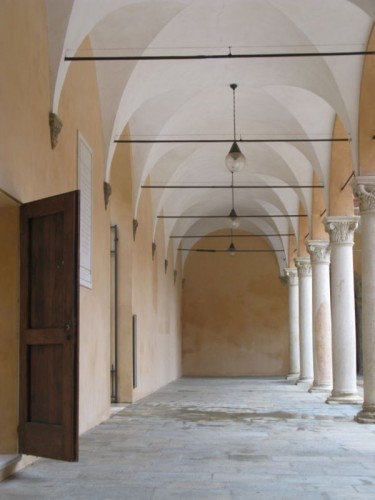
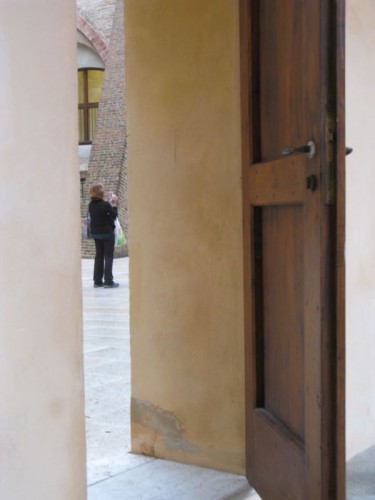
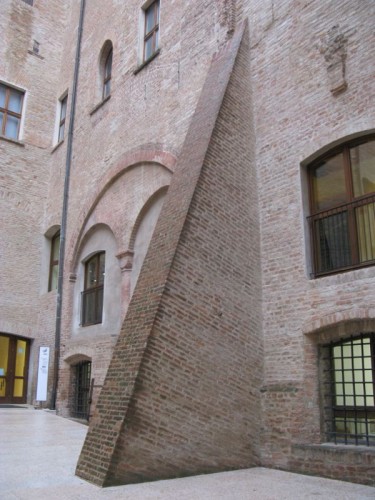
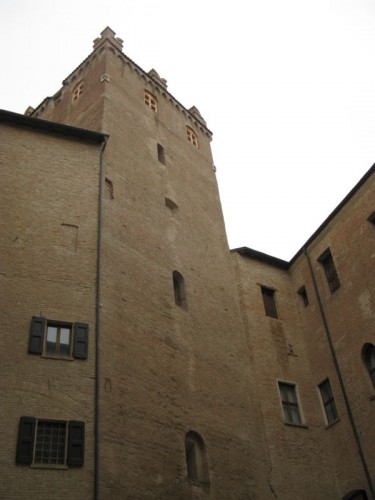
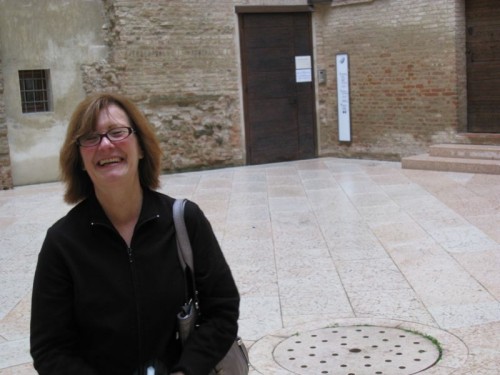
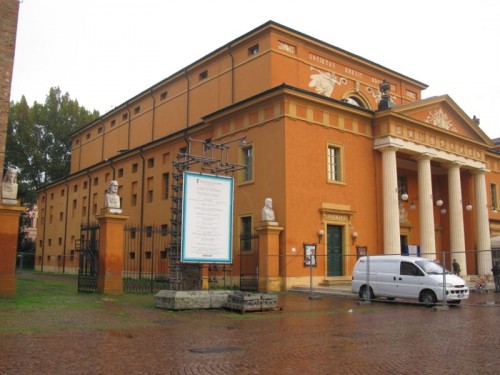
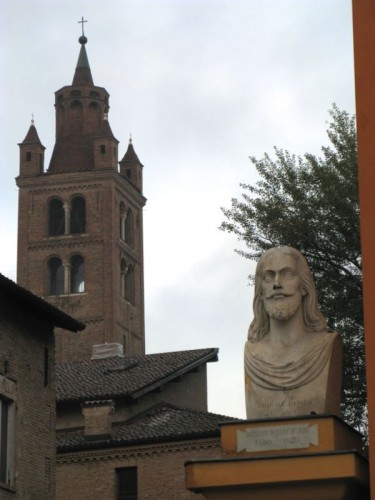
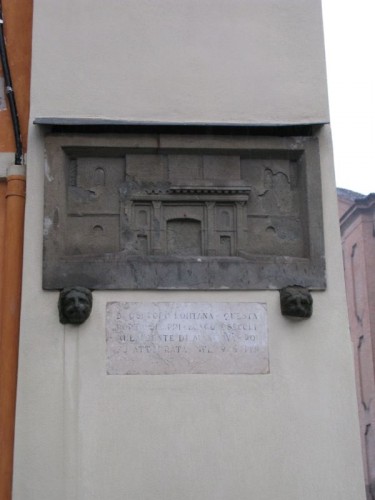
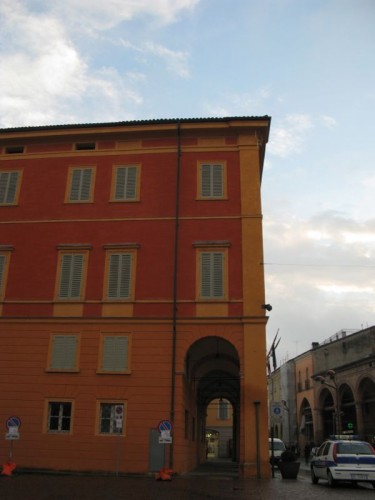
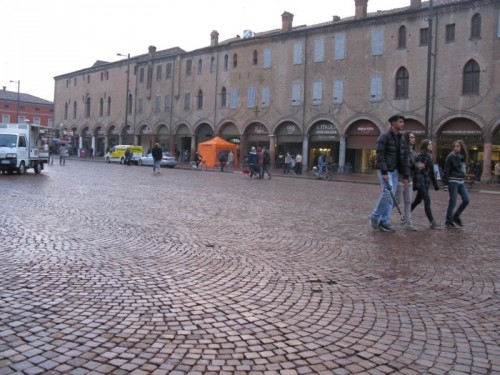
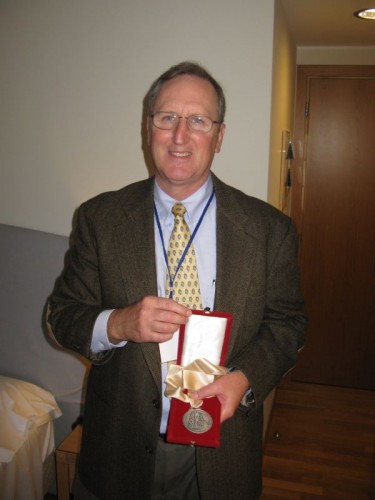
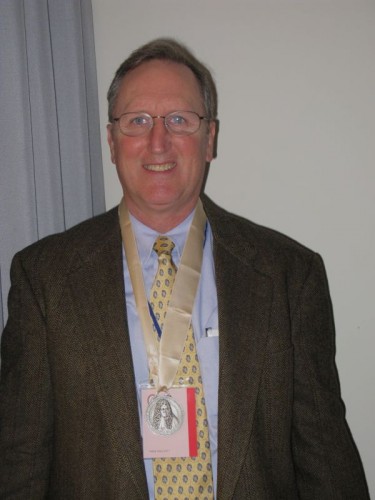
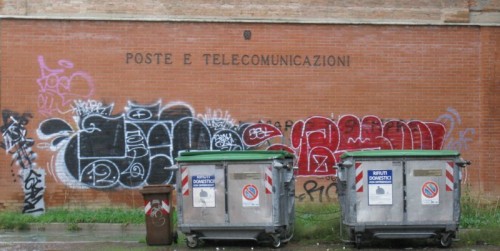
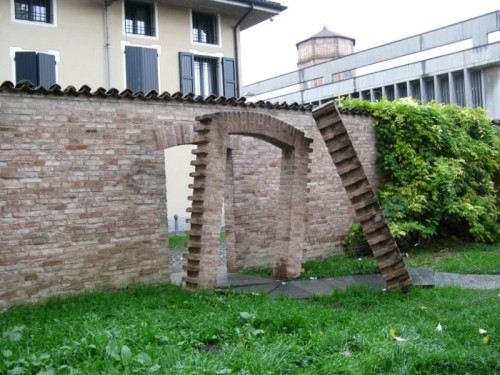
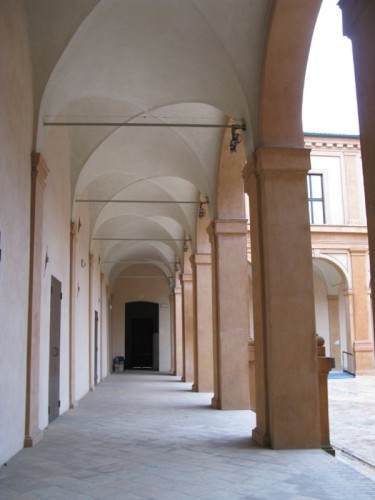
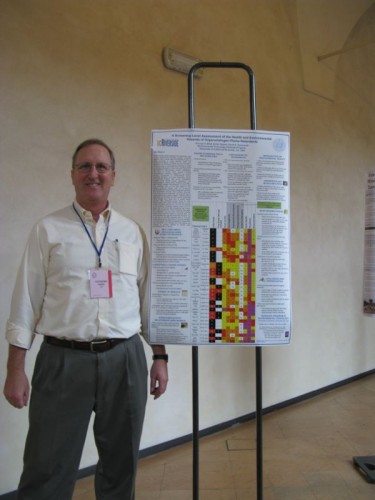
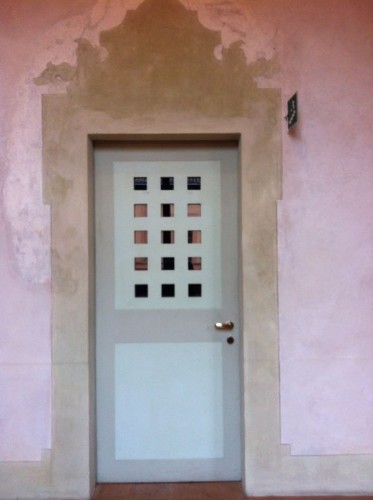
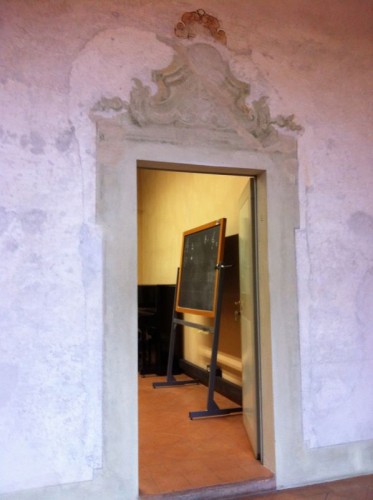
I love the rain photos. Wet surfaces look somehow more dramatic, romantic, or appealing. I also love the grocery store shots. We always spend some significant time in grocery stores abroad. They are a favorite destination. Finally, tell Dr. Dave he looks very fine in his medal. I expect to see him model it next time I see him.